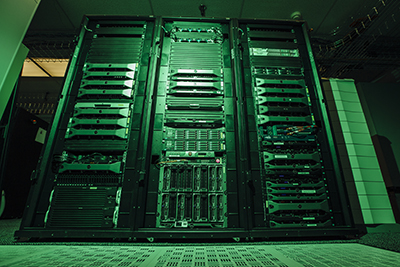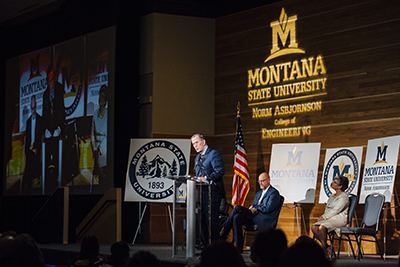Stewardship
As a public land-grant institution, MSU recognizes and honors its obligation to the many constituents who invest their time, financial resources, energy and support. MSU deeply values the public trust granted to it and is committed to continued good stewardship of its resources.
Goal: As steward of a land-grant institution, MSU will responsibly manage its human, physical, economic and environmental resources in an open and sustainable manner.
Objective S.1: Human Resources. Attract, develop and retain the best faculty and staff to achieve the MSU mission.
Objective S.2: Physical Resources. Enhance aesthetic appeal and functional quality of MSU physical resources to support high quality learning, research and work environments.
Objective S.3: Economic Resources. Increase and effectively allocate resources in support of the MSU Strategic Plan.
Objective S.4: Environmental Resources. Promote sustainable stewardship and a culture of resource conservation at MSU.
Strategies
- Retain our faculty and staff with market-based compensation and professional development opportunities
- Work with the state system to improve classification and compensation plan, processes and outcomes
- Analyze and calibrate workload to meet the growing student body’s needs while encouraging focus on strategic priorities
- Leverage shared services to maximize efficient and effective administrative processes
- Invest in functional and aesthetic improvements to our physical infrastructure
- Work with the MSU Alumni Foundation on the Comprehensive Campaign
- Invest in energy saving building upgrades and minimize carbon footprint through reduced consumption and increased waste diversion
Budget Alignment
(2017-18 investments unless otherwise noted):
- $800,000 salary adjustment pool distributed in base pay increases for market, progression and retention of talented staff
- $965,000 in market, merit, equity, retention and promotion increases for tenured and tenure-track faculty (also in Discovery)
- $400,000 invested in training for faculty and staff through Center for Faculty Excellence and HR Professional Development and Training
- New space management function implemented to guide physical stewardship through strategic space planning and allocation
- $75 million south campus project featuring Norm Asbjornson Hall with flexible design and innovative classrooms, labs, maker spaces and performance space to open January 2019, expected LEED certification
- $18 million Rendezvous Dining Commons serving growing student body with diverse food offerings opened fall 2018, with LEED Platinum certification
- Groundbreaking for new $50 million residence hall in FY19 that will open in Fall 2020 to support student learning and co-curricular programming
- Revised budget model incorporating forecasting, enrollment growth and strategic investment pools used for allocation of FY18 and FY19 budgets
- Over $5.6 million in new budget model strategic reallocation pools awarded for FY18 and $5.4 million for FY19 in base and one-time strategic plan investments (many noted throughout this report)
- Shared fiscal, human resources, information technology, analysis, communications and advising models developed to leverage existing staff and investments to serve a growing University without additional resources
- Additional $1 million in MSU Alumni Foundation scholarship funds distributed to students using improved processes and technology (also in Access)
Successes
Stewarding Economic Resources
Moody’s Investors Service assigned a high-quality Aa3 rating to MSU’s bond issuance to build a 480-bed residence hall, and Standard & Poor’s Global Ratings assigned a favorable A-plus rating to MSU’s bonds. S&P cited the university’s solid management team, stable enrollment and student quality as part of its rationale.
Farm to Campus

Montana State University assistant professor Tom Murphy, right, guided MSU culinary staff on a tour of MSU's Red Bluff Research Ranch to learn more about where they source lamb meat, on Monday, April 23, 2018. MSU photo by Marshall Swearingen.
Montana State University’s Culinary Services won a silver award for sustainable procurement practices for its food operations from the National Association of College and University Food Services for a partnership between Culinary Services and the MSU College of Agriculture. Through the partnership, Culinary Services purchases student-raised beef and lamb, as well as pork from local 4-H youth, to serve in university dining halls. MSU buys meat, vegetables, fruits and other ingredients directly from more than 100 local producers. Currently, MSU spends more than $1.5 million annually on Montana-sourced foods, or about 25 percent of the university’s total food purchases.
Supporting Each Other
Launched by the MSU Staff Senate and MSU Professional Council, the inaugural Montana State University Staff Scholarship Program for classified and professional MSU staff members and their dependents awarded its first five scholarships. The scholarship funds have been donated by MSU employees and may be used at any of the Montana University System institutions.
Bandwidth

students, faculty and, especially, researchers. The upgrade ensures MSU has the network resources it needs to provide cloud-based tools for collaboration, online learning and business environments, while also acting as the lifeblood for research. Since 2013, MSU has grown its network bandwidth from 10 gigabits per second to a whopping 100 gigabits per second with this latest upgrade.
TRAILS of Good Stewardship
Led by MSU’s Library, The Treasure State Academic Information and Library Services – or TRAILS – consortium of 24 higher education academic libraries in Montana is designed to provide better services to users statewide while avoiding costs that libraries would pay in contracts negotiated individually. Providing greater access to educational resources for more students, collectively TRAILS owns more than 4 million library items and serves more than 49,500 students, faculty and researchers. To date, the consortium’s negotiations for costly databases and research journals has collectively avoided $2 million in costs for its partners. The consortium projects its members will avert another $7 million in costs over the next five years.
Generous with Economic and Physical Resources

Norm Asbjornson, a Montana State University alumnus, spoke during a naming dedication for the Norm Asbjornson College of Engineering at MSU on Thursday, Feb. 1, 2018, in the Strand Union Building on campus in Bozeman. MSU Photo by Adrian Sanchez-Gonzalez.
Montana State University celebrated the naming of its engineering college for the most generous donor in the history of the state’s university system. Norm Asbjornson has given more than $55 million to the university. Starting from humble beginnings in Winifred, MT, during the Great Depression, Asbjornson earned money by feeding chickens, hauling garbage and driving tractor before coming to then-Montana State College, where he earned his bachelor’s in mechanical engineering in 1960. Asbjornson went on to a successful career in the heating, ventilation and air-conditioning (HVAC) industry. The Norm Asbjornson Hall will open in January 2019, and anticipates LEED Platinum certification.
Sustainable Agriculture
Montana State University has been selected as the next Western region host institution of the Sustainable Agriculture Research and Education organization, the country’s foremost, producer-led research and education grant program for sustainable agriculture. A greater focus on including minority populations and women, in addition to supporting and training the next generation of farmers and food producers, are priorities for Montana State, the Western SARE region and the U.S.
